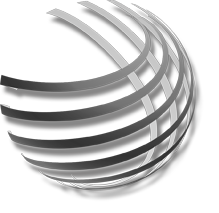MBT-Outsourcing
What is this?
Globalization and the increasing competition in many different sectors, e.g. for automotive suppliers, forces many companies to ask themselves how to become lean and more efficient. This consequently leads to the question which parts of the value chain represent core activities and which not.
Activities that are non-core do not have to be performed internally. In addition to administrative tasks that are regularly outsourced today, the discussion now has also spread to activities that are closer to the core business. In many cases, the internal machinery and tooling business no longer represent a core activity.
Thus MBT Outsourcing stands for a transaction where a company’s Machinebuilding and / or Toolmaking (MBT) activities are sold to a partner who subsequently delivers the same goods and services to the former owner, e.g. within the frame of a supplier partnership.
How does it work?
MBT Outsourcing requires a clearly structured, prudent process. At the beginning, those activities that should be taken over have to be defined precisely. This includes the definition of the divisions and employees which are to be part of the transaction. The involvement of the workers' council and the establishment of a trusted relationship are of the utmost importance. AES INDUSTRIALS gladly offers support.
On a next level, transaction-related questions are of importance, e.g. questions related to the transaction structure, a potential transfer of undertakings, and the establishment of interfaces to the selling company for the time after the transaction. The arrangement of a supplier relationship with the selling group can be an important point, too.
In a third step, the acquired activities are developed further. Within the frame of a systematic program, a pragmatic, promising concept is developed and subsequently executed. A profound analysis of the initial situation is the basis for the successful business plan; employees and management have to be involved intensely in this process of determining related targets and measures.
What are the advantages?
From the seller’s perspective, there are many advantages:
- Fix cost reduction / cost flexibilization due to take over of employees by AES (“breathing” in times of volatility).
- Price advantages for machines and tools, since the acquired activities can be optimized and potential synergies with current activities of AES and affiliated companies related to both cost and turnover positions can be realized. Resulting margin improvements can be forwarded to customers, i.e. also to the seller of the activities.
- Technological enhancement through technological spillovers between affiliated companies and enhancement of innovativeness through impulses from the new access to external markets.
- Flexibility regarding supplier selection for the seller; no obligation to buy internally.
- Direct link to supplier since major activities remain at the seller‘s site.
- Regaining of management capacity & focus on core business.




